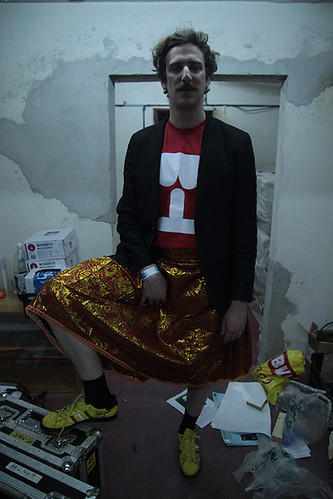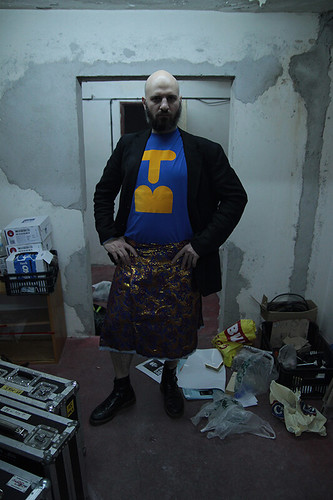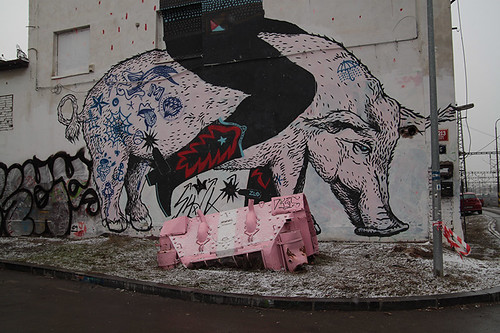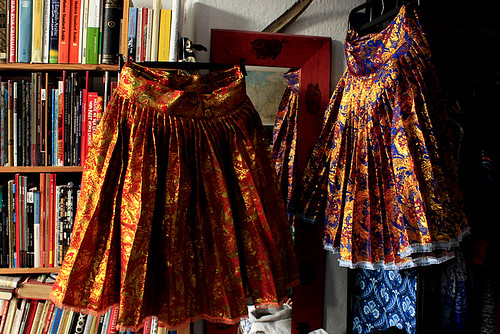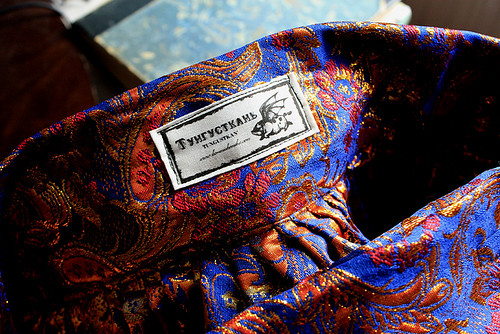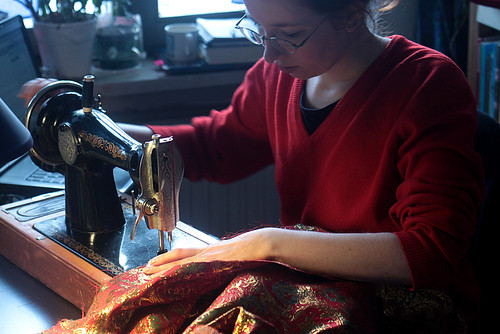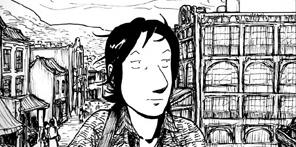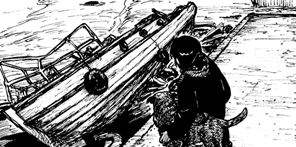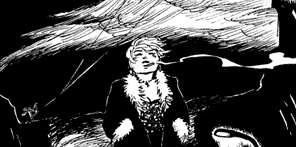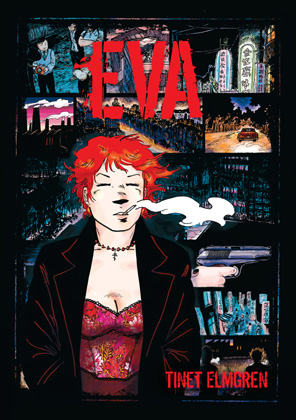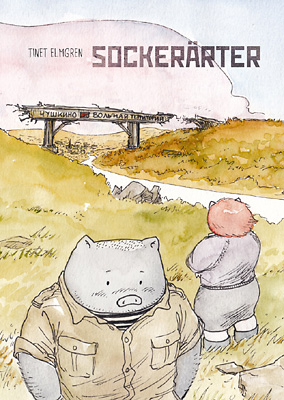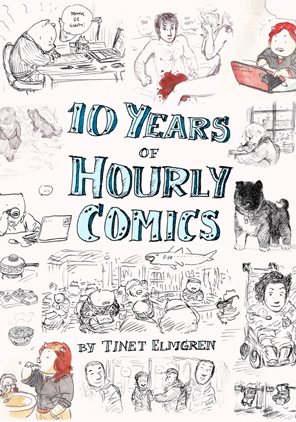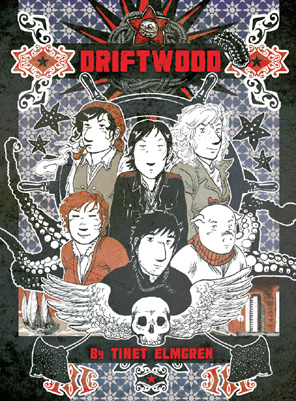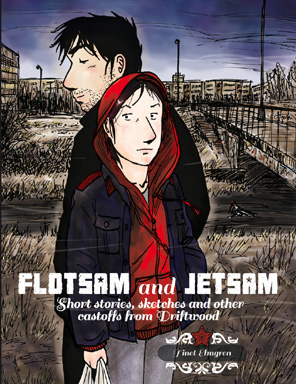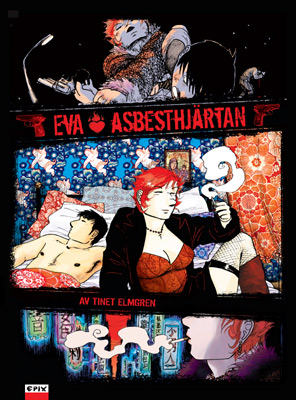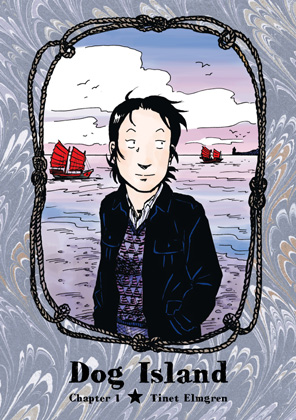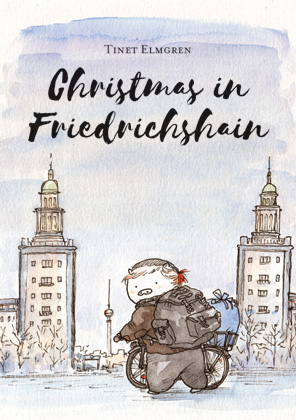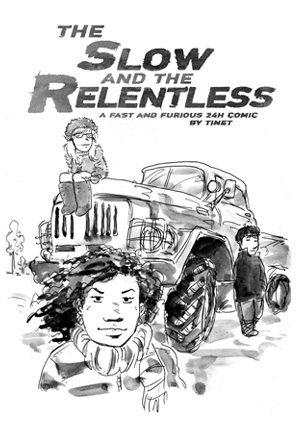Sewing project: Shoulder bag with piggy details
Last year when I was in Bulgaria, my old camera bag finally fell completely apart (luckily it happened on the final train trip from Varna back to Sofia). Since then I’ve been meaning to make another one, and why not a bag that can also be used as a smallish shoulder bag, as I didn’t have one and often found myself in need of one.
Yesterday I finally finished the project!
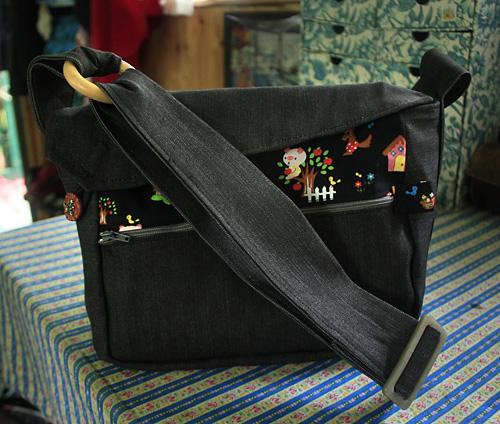
For the interior and main zipper I actually recycled the intestines of another shoulder bag (which had the wrong colour and shape for my purposes). So it has a wallet pocket and a phone pocket inside. Inside the bag I added my own label, and supplemented the recycled lining with some non-dusting/non-fuzzing fabric, and for accents on the outside I used an amazing Japanese piggy fabric, with the three little piggies and the little naughty wolf. V^(oo)^V
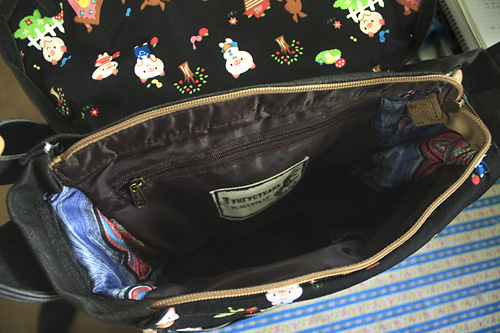
The bag is lined with fleece to protect the camera, and the top cover has waterproof lining. The shoulder strap goes all the way around the bottom of the bag.
This project involved a lot of thick piles of fabric that had to be sewn together, but my trusty Soviet sewing machine soldiered through most of it without complaint. I only growled and swore in many different languages during the tricky part where the outside, the lining and the main zipper all had to be sewn together.
Rain and lunch
Hmm, what colours should I wear this summer, to match the bruises on my legs …? Purple, green, yellow? (I fell into a tram track with my bike.) Well, so far it doesn’t seem to be a problem, really, because it just won’t stop raining.
Nasturtium, potatoes, nettles and borages, all blossoming in the rain.
A worker bee! They have to work, come rain, come shine. So do I, so when there isn’t enough sun for my solar panels, I have to go to town and work in a cafe.
Torrent de Bites reports from Prague, wearing my kilts!
DJ Schnautzi and his matching sneakers, backstage.
VJ Decrepticon and his Swedish-themed T-shirt.
Some of the nicest street art ever!
Photos by Ilan, André and Ilan.
Arts and crafts, feminism and class
I remember reading an opinion piece in some Swedish newspaper or magazine (can’t remember where or by whom) where the author was venting her frustration about the recent popularity among female hipsters of “bourgeois”, “traditionally feminine” activities: various forms of handicraft. She thought young women shouldn’t sit at home and sew, when they could go out and party and “learn to live”.
Now, I’m not sure if talking bullshit, drinking alcohol and having one night stands really teaches you so much more about life than the experience of making something with your own hands. To each their own, I guess. I’m not saying partying is bad, I’m just saying it isn’t necessarily better than handicraft. :o)
About the “bourgeois” thing:
My mother, genuine working class from Tampere, Finland, is a textile artist and book binder. (Actually she is unemployed or a minimum wage worker and an artisan in her free time.) As a teenager she made almost all her clothes herself. On a Saturday, she would get some fabric, rush to make a new, cool dress on her mum’s Tikka treadle sewing machine, and finish it just in time before putting on makeup for an hour and going to the disco in the evening.
My grandma also made lots of clothes on that sewing machine. It was all essentially about saving money — fabric was cheaper than factory-made clothes. By making their own clothes, they could look fabulous even if they were poor.
I do exactly the same: except for underwear, I never buy new clothes. I either thrift, or I make them myself. Not because I want to be “hip” or “different”, but because buying new clothes is way outside my budget — I make, on average, about 400 € a month. (But perhaps the author of that opinion article doesn’t know what that’s like.)
As for my skills, even though my mum is proficient in many forms of textile art, I pretty much refused to learn anything from her :op … But then I learned basic sewing and knitting in school. I learned basic carpentry, too. That was because the government gave funds to the schools so that all children could have the chance to learn basic arts and crafts skills. And since mum had a sewing machine and carpentry tools, and there was money to be saved in doing it, I took those skills home and made clothes for myself and helped mum build stuff and do small repairs on the house.
I know that bourgeois women in the olden days were supposed to be skillful in embroidery and shit, and stay home and sew instead of having adventures, but that’s not where I come from, so I won’t accept a blanket statement that denies an important part of my background and my reality. And anyway, my mum’s teenage example clearly shows that there is no “either-or” between handicraft and partying.
… As for the “traditionally feminine” thing:
It seems a little bit anti-feminist to state that anything you deem to be “traditionally feminine” is a bad thing. I believe activities should not be judged based on what genders have traditionally been engaging in them, but based on how pleasant, useful, constructive, etc. they are. And I do think arts and crafts can be very useful.
Even more so in the age of overconsumption and overproduction of underpriced consumer goods, and the total alienation between producer and consumer. I think making something all by yourself really helps to get a better understanding for the value of things.
Furthermore, I think it’s wonderful when women and men do things that are not “traditinally feminine/masculine” activities. And it’s really important to be conscious of gender structures. But I do not think it’s inherently bad when people engage in activities that happen to be traditional for their own gender.
Many “traditionally feminine” activities have for a long time been ignored, deemed as less “worthy”, and ridiculed, as one part in the general oppression of women. It is not (necessarily) stupid difference feminism to want to celebrate and acknowledge centuries and millennia of “traditionally feminine” activities. Many feminist artists have used textile arts techniques like knitting, embroidery, quilting, etc. in a conscious effort to celebrate “traditional women’s art”. Judy Chicago is perhaps the most well-known (with, for example, Birth Tear and Hot Flash Fan), and there are many others, like Elaine Reichek and Blanka Amezkua.
I like drawing, sewing, building and repairing stuff around the house, printing, embroidery, linguistics, photography, gardening, animal husbandry and mathematics, and I’m a feminist with working class heritage*.
____________________________________
* 50% working class, that is. My dad is from a middle class background, and though he started out as a sportsman and factory worker, he eventually climbed high up on the career ladder. For a few years we apparently had a lot of money, but besides his nice company car, fairly big apartments (my sister and I even had our own rooms in one apartment) and holidays abroad, we didn’t really notice it that much. Mum didn’t want to “spoil” us, so we often had the worst clothes in class, and we just went to regular schools even though we were really bright students. Then they divorced, and mum had no formal education, hardly any work experience (since they had an agreement that she would take care of the household and he would bring home the bread), and was a woman pushing 50, so since then she has been on minimum wage or unemployed.
Anyway, for me, mum has always been much more influential, and I’ve hardly had any contact with my dad for many years now.
TungusTkan’ presents: Torrent de Bites kilts!
Ilan is part of Torrent de Bites (VJ Decrepticon and DJ Schnautzi). Here is their demo … (I had my part in designing the nice logo.)
Torrent de Bites: Demo from ilan katin on Vimeo.
They started out as a completely improvised last-minute arrangement due to a lineup change during the Mapping festival in Geneva 2009, but everyone was so excited about it that they in fact didn’t split up immediately afterwards. Now they have a gig coming up at Lunchmeat in Prague, and they need nice new outfits. So I made them pretty kilts in silk brocade. The fabric is lighter than normal kilt fabric, so they are quite bouncy! Can’t wait to see the footage of their performance …
The kilts close with velcro and a safety pin, and they also have belt loops, mostly so you can hang them up for storage to avoid damaging the pleats, but of course also for a belt or sash if the gentlemen should like that.
And of course they have the TungusTkan’ label:
Working with my lovely PMZ sewing machine (photos by Ilan):

